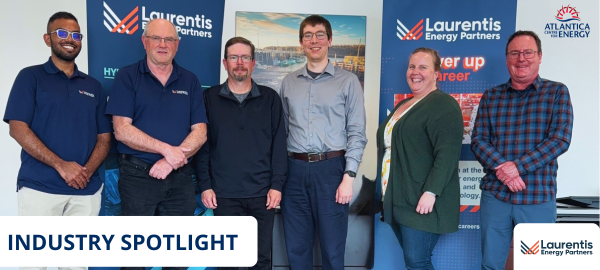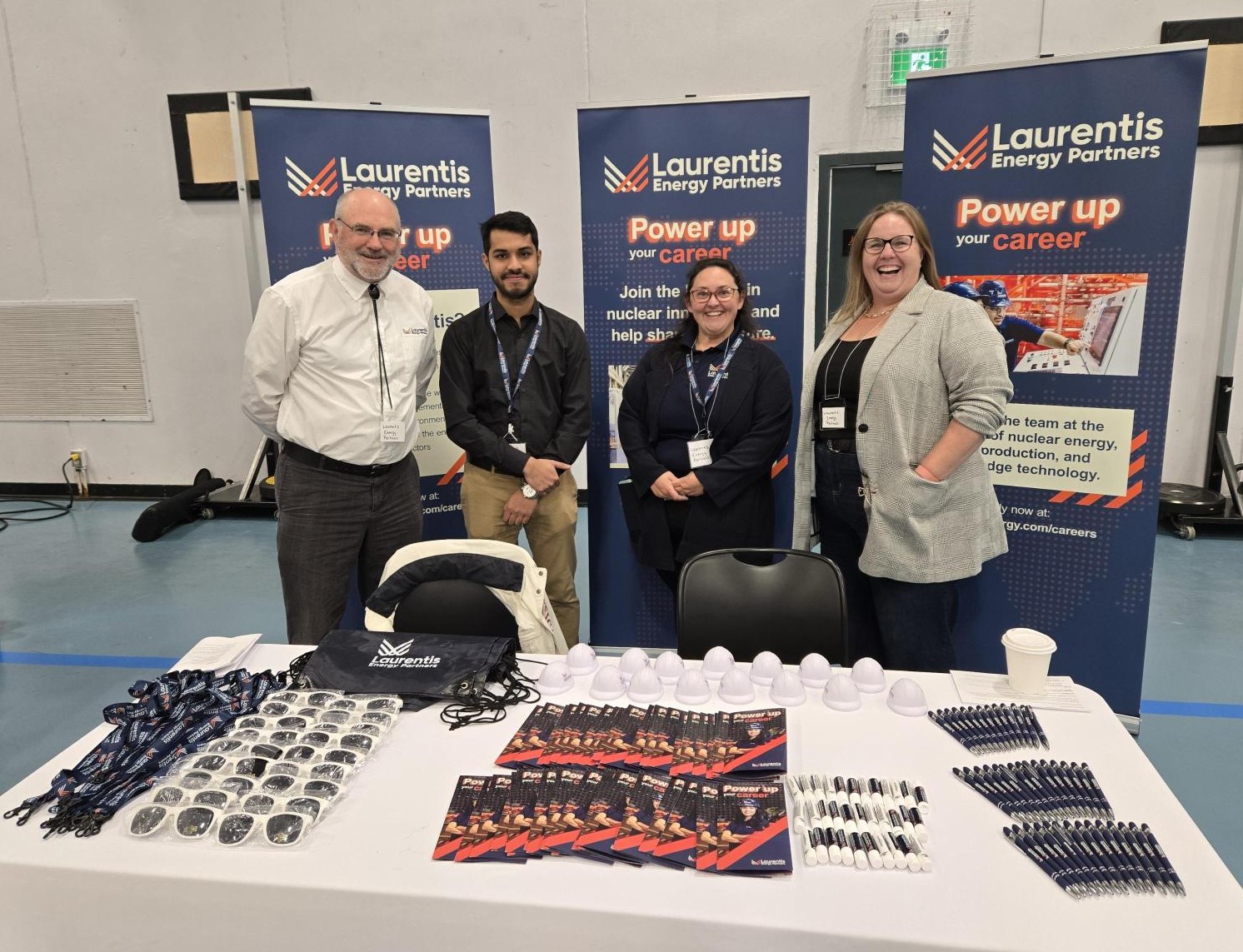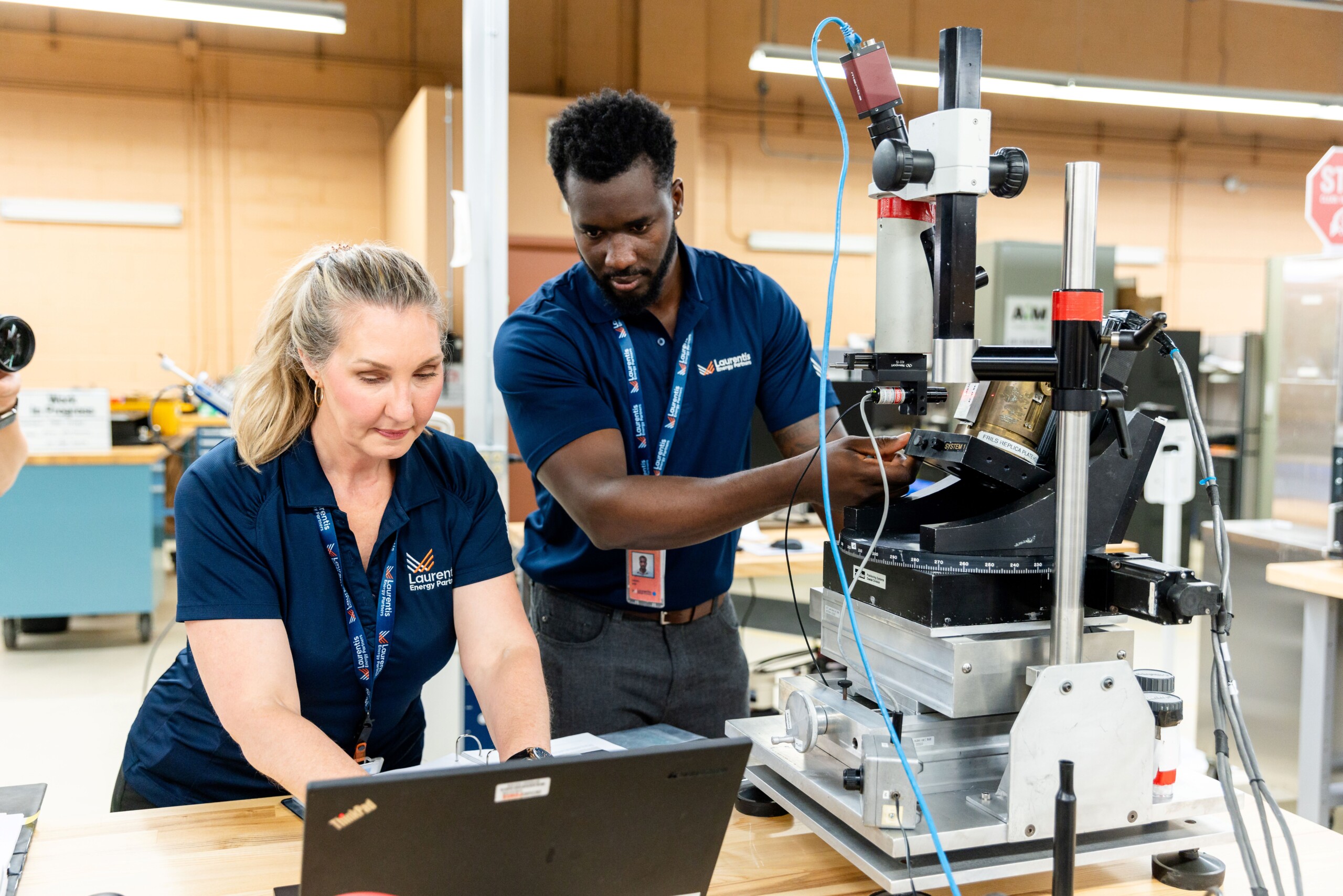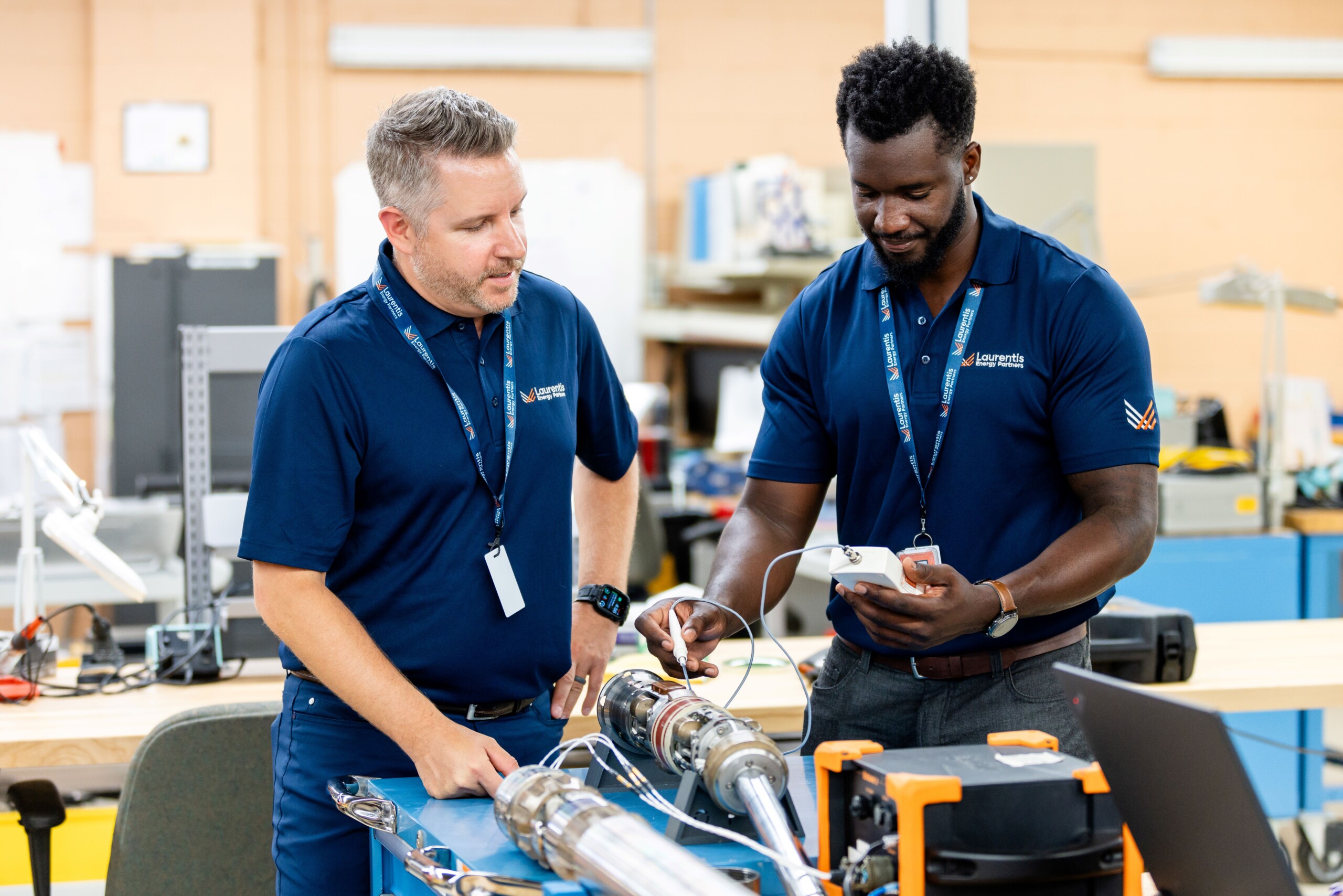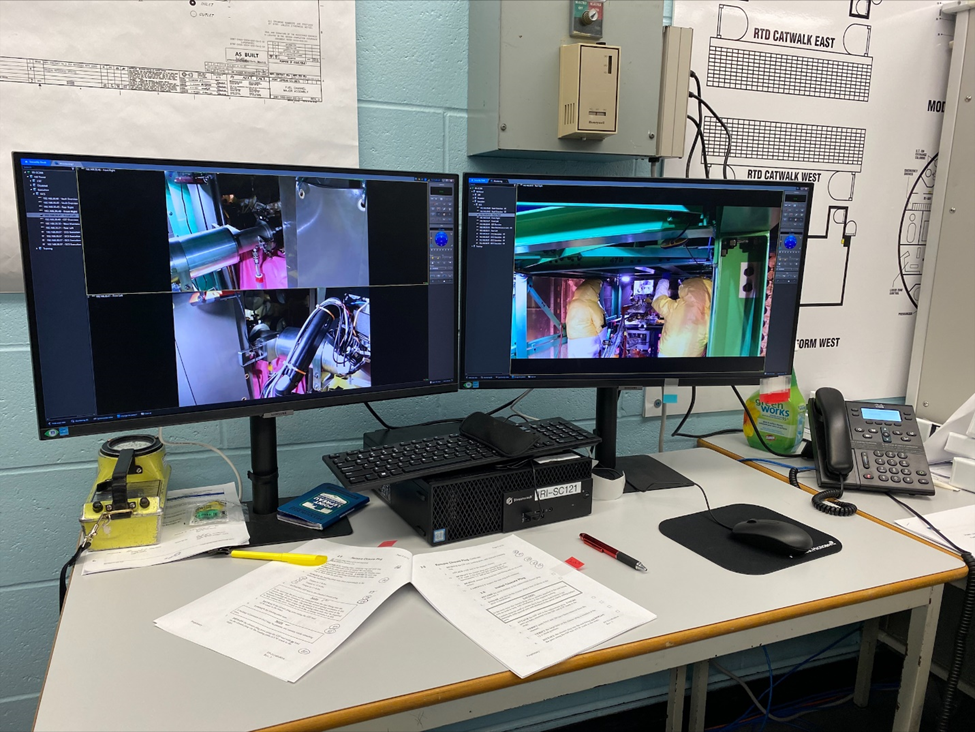September 2025 – A conversation with Laurentis Energy Partners.
When most people think of nuclear, they think of the Point Lepreau Generating Station on the Bay of Fundy. But nuclear in this province goes far beyond generating electricity; advancing new reactor designs, creating opportunities for local workers, and unlocking the potential to produce isotopes used in cancer treatment.
To learn more, Atlantica sat down with Chris Dixon, Vice-President of Nuclear for Laurentis Energy Partners, and Mark McDermott, Senior Manager of Operations in Saint John. Between them, they bring decades of experience with Point Lepreau and Ontario’s CANDU reactors, and a passion for what nuclear can do for Atlantic Canada.
Where are you talking from today, and what’s your role at Laurentis?
Chris Dixon: “I’m in Toronto. I completed my education in nuclear physics at McMaster University in Hamilton, Ontario, over 30 years ago. I’ve worked as a health physicist, but most of my career was spent as a nuclear operator. I was a licensed Shift Manager at Pickering, then an Assistant Operations Manager at all three of OPG’s nuclear generating stations [Pickering 014, Pickering 058, and Darlington]. Later, I was an Operations Director for a new nuclear startup looking to develop Generation IV micro modular reactor technology with an aim to provide clean and safe power for Canada’s far North. I joined Laurentis just over a year ago, and now I get to apply my operations knowledge on a bigger, international scale.”
Mark McDermott: “I’m in Saint John. I graduated from UNB Fredericton almost 40 years ago and spent 25 years at NB Power’s Point Lepreau Generating Station, in roles from turbine-generator supervisor to design authority, and got my 25-year gold watch. After retiring, I consulted for a year, then joined Laurentis 15 months ago. Now I manage operations in our Saint John office, where we have eight employees.”
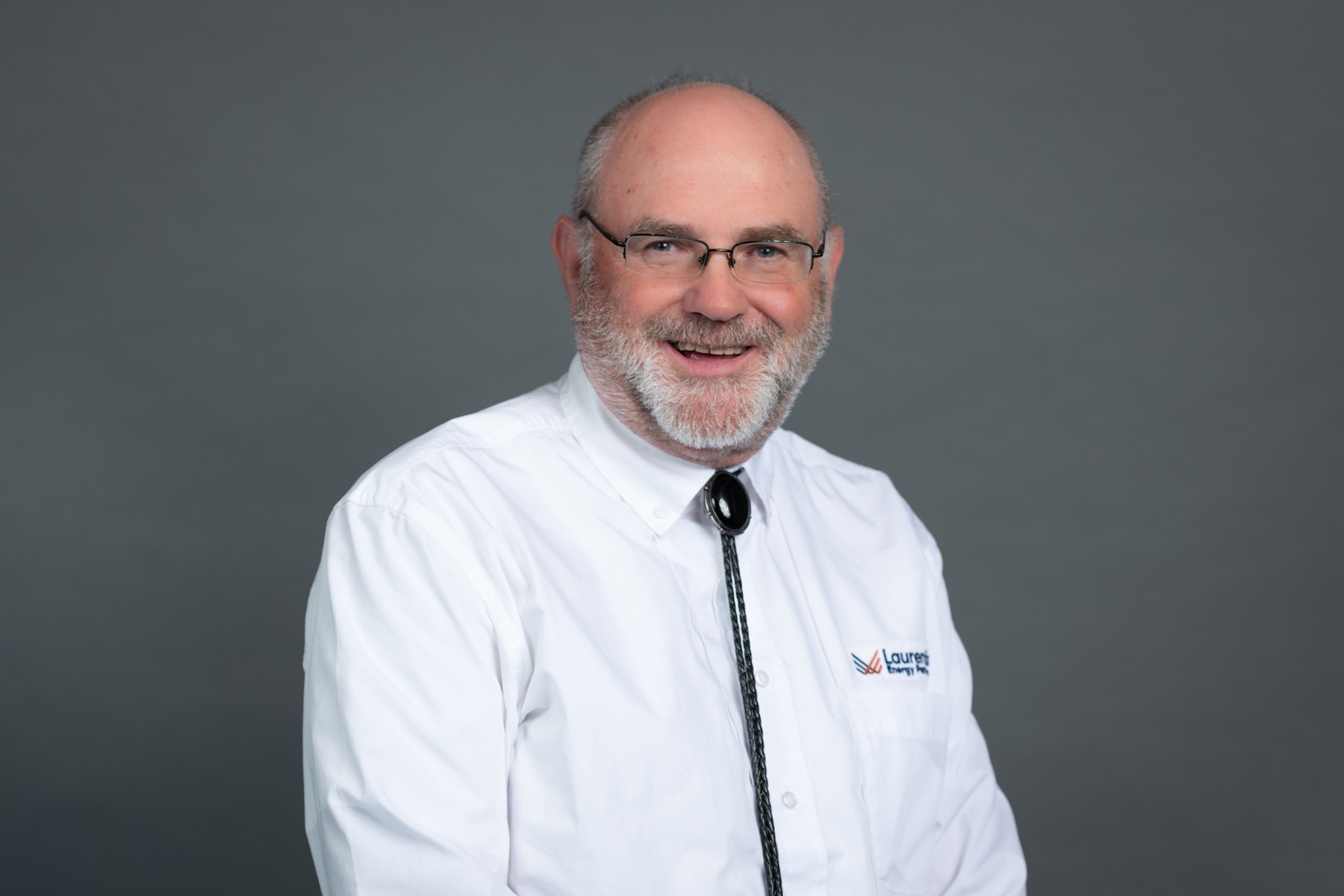
Mark McDermott
Senior Manager of Operations, Saint John, LEP
For those unfamiliar, what is Laurentis Energy Partners (Laurentis)?
Chris Dixon: “We’re a subsidiary of Ontario Power Generation, with offices in New Brunswick, Ontario, and Romania. We cover the full nuclear life cycle: design and engineering, maintenance, waste management, and decommissioning, and we produce critical medical isotopes used in cancer diagnosis and treatment and rare non-medical isotopes used in industrial applications and research.”
“We’re strong in CANDU, but we’re technology agnostic – we’ll support small modular reactors and micro-reactors too. Our job is to help people move off fossil fuels and into clean, reliable, low-carbon nuclear power.”
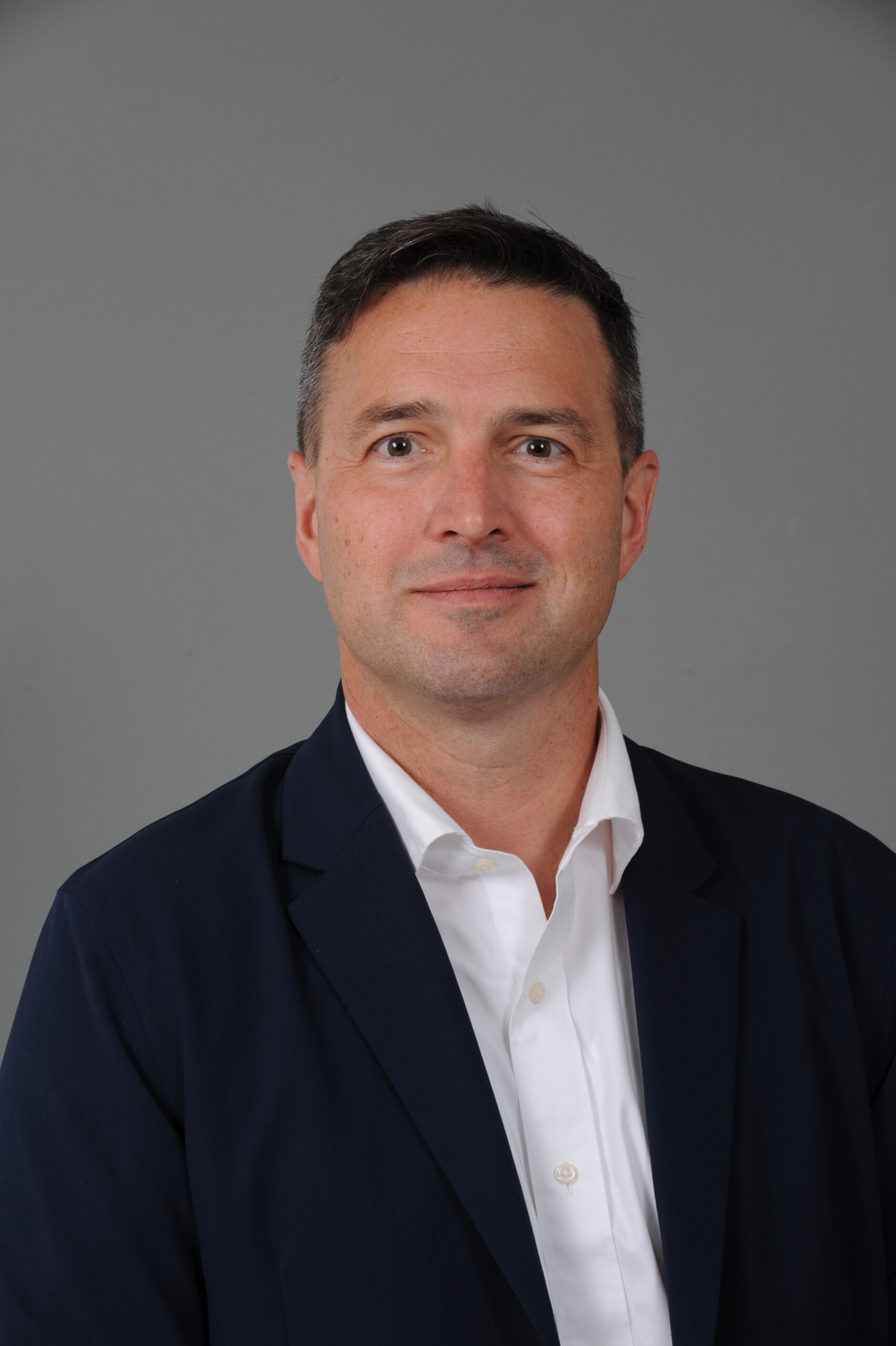
Chris Dixon
Vice-President of Nuclear, LEP
What projects is Laurentis working on now in New Brunswick?
Mark McDermott: “We have a 10-year reactor maintenance agreement [with NB Power]. We provide inspections, fuel channel replacement, and radiation protection services – supplying teams of 50 or 60 local tradespeople during outages, and sometimes up to 90.”
“We opened an office in Saint John in 2019. About 25% of the work from our Saint John team supports New Brunswick, while 75% supports projects elsewhere, including Europe. We’re also providing the engineering work required for the future Laurentis Health and Innovation Centre in Hamilton, Ontario, where isotopes will be processed for cancer care.”
What other significant projects is Laurentis working on in Canada?
Chris Dixon: “At OPG’s Darlington, we’ve installed a first-of-its-kind Target Delivery System in partnership with BWXT Medical. It’s the largest isotope irradiation system in North America and it produces medical isotopes in a large reactor at an industrial scale, something research reactors have been doing historically but on a much smaller scale. We’re also planning to install a second system for redundancy and increased supply to meet the enormous global demand for medical grade radioisotopes in addition to Ontario’s goal of doubling its medical isotope production capacity by 2030.”
“Laurentis provides radiation protection services and health physics across Canada, and supports station maintenance at Point Lepreau and other CANDU sites around the world. We’re also working with clients in Alberta and Saskatchewan on new small modular reactors. And internationally, we’re active in Romania, providing Project Management Organization services for the Cernavoda Unit 1 refurbishment project; and in Poland, and Estonia, supporting SMR development.”
Laurentis helps produce medical isotopes used to fight cancer. What are they, and why does this matter?
Chris Dixon: “Each one of us has been touched by cancer in some way. Isotopes are a powerful way to diagnose or treat it. Being part of a solution that helps people live longer, healthier lives is enormously meaningful on a personal and societal level. At Darlington, Laurentis, using its Target Delivery System, is or will soon be producing:
- Molybdenum-99 (Mo-99): widely used globally for diagnostic imaging for heart health and cancer detection. It’s used in over 40 million procedures each year. After the NRU closed in 2018, Canada had to rely on imports of Mo-99. We’re proud to be able to produce this in in a much larger volume than has been done before, creating a reliable, North American supply for patients in need.
- Yttrium-90 (Y-90): primarily used to target liver cancer with tiny radiation beads, or beta emitters as we call them. It’s like brachytherapy and is pressed against the cancer cell itself, thereby targeting cancer cells directly without harming healthy cells.
- Lutetium-177 (Lu-177): is considered one of the most promising isotopes in radiotheranostics. It helps treat prostate, breast, and neuroendocrine cancers, binding to tumours and destroying them while sparing healthy tissue. This specific isotope has enormous potential to save lives and we’re quite excited about being at the forefront, helping to ensure a reliable, high-capacity supply.”
How do you make sure isotope production is safe and reliable?
Chris Dixon: “When you build a Target Delivery System, it goes through years of design, regulatory compliance, and production testing. Medical isotopes have to meet the strictest standards from regulators like the Canadian Nuclear Safety Commission, Health Canada, and the U.S. FDA. We spend months running operations to prove safety, operational reliability, and medical-grade quality. Nothing moves forward until we’ve proven it’s safe and reliable for operations and safe for patients.”
Could you tell us about some other non-energy benefits of nuclear?
Chris Dixon: “One of the biggest is isotopes. I already mentioned Mo-99, Y-90 and Lu-177, but Ontario Power Generation also produces cobalt-60, used worldwide to sterilize medical supplies. Tritium, a by-product of nuclear power, decays into helium-3, which is also extremely rare and valuable. Micro modular reactors can also heat homes and greenhouses in northern communities, giving them energy security and food security. And the nuclear sector drives high-skilled jobs, innovation, and global exports in technology and isotopes. Nuclear really does bring benefits to health, the economy, and the environment.”
Tritium gets mentioned often in public debates. What is it, and should people be worried?
Mark McDermott: “Tritium is a hydrogen isotope. It’s radioactive, so you manage and minimize it. It has a half-life of about 12.3 years, meaning that half of it will be non-radioactive after that time.”
Chris Dixon: “It’s very low-energy and always contained within dedicated station systems – never in public water. What people don’t realize is the benefits: tritium decays into helium-3, which is a stable (non-radioactive) and inert gas that is rare and incredibly useful for quantum computing, neutron research, border security, and medical imaging. Laurentis is actually the largest and only civilian source of helium-3 in the world. We extract the high-purity helium-3 from tritium stored at OPG’s Darlington Tritium Removal Facility using a custom-designed tool.”
What role is Laurentis playing in SMR projects?
Chris Dixon: “Small modular reactors (SMRs) are smaller, factory-built, and inherently safe. But they still go through the same regulatory checks as large reactors. At Laurentis, we share our operational and regulatory experience to help new companies navigate and succeed in achieving their goals through SMR development.”
“At the end of the day, we just want these projects to succeed so they can provide clean, safe, and carbon-free energy to communities. Playing a role in the Darlington New Nuclear Project, the first grid-scale SMR project in a G7 country to get regulatory approval, is a significant advantage for us and, therefore, our clients.”
Mark McDermott: “New Brunswick is uniquely positioned for SMRs in the future; we have Point Lepreau and UNB’s Advanced Nuclear Labs, and a strong industrial base. There’s a lot of opportunity here.”
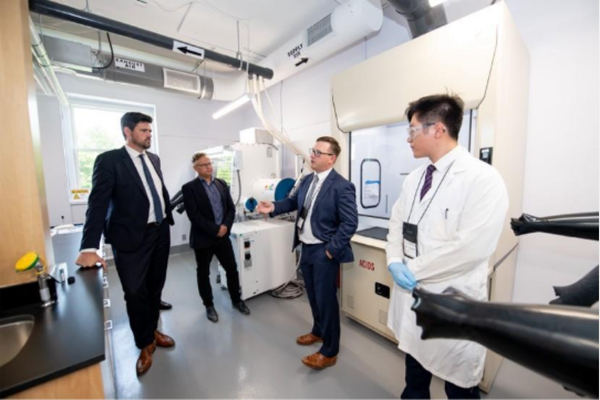
Advanced Nuclear Reactors Laboratory
University of New Brunswick
Laurentis joined the New Brunswick Energy Cluster in 2024. What motivated this choice, and how are you contributing locally?
Mark McDermott: “Large projects need collaboration. No single firm can do it all. By joining the Cluster, we can partner with local companies that bring trades and construction expertise, while we provide engineering and project management.”
“Many of these companies are already working nationally, from Newfoundland refineries to LNG projects in Kitimat. They understand local conditions and bring decades of experience. Together, we can deliver expertise and experience here and export services beyond the province.”
How do you make sure projects are built with communities, not just in them?
Chris Dixon: “We hire locally as much as possible, but it’s not just about jobs. It’s about building lasting relationships. We need to work with local communities, including Indigenous communities and First Nations, to understand what matters to them and reflect those priorities in how projects are planned and delivered. It’s important that communities are active partners at the table.”
Mark McDermott: “Projects span decades. Local knowledge about geology, environment, and culture is critical. Sustainability depends on involving the community from the start.”
Some Atlantic Canadians are undecided about nuclear energy. What would you say to them?
Mark McDermott: “Nuclear has been operating in Canada for more than 50 years, 40 of those in New Brunswick. Any energy source needs respect and regulation, and nuclear is no different. The important thing is to focus on facts, not fear.”
Chris Dixon: : “Nuclear is one of the most strictly regulated industries in the world. When I was licensed, I was tested every five weeks in 20 to 30 simulations, just like airline pilots, to prove I could operate the reactors safely. We are fully dedicated to the safe operation of the facilities that we work in, at all levels of the organization, ensuring safety is always the top priority. Nuclear power is about more than electricity – it’s about health, innovation, and environmental responsibility. If people are nervous, I’d encourage them to ask questions. Those of us in the industry are strong believers in its safety and benefits, and are eager to talk about why we love what we do.”
Finally, what excites you most about New Brunswick’s role in clean energy?
Mark McDermott: “Point Lepreau was originally licensed for more than one reactor unit. With SMR development, UNB’s research, and a strong industrial base, we’re ready to grow. Belledune is also exploring a site. We have the experience and community acceptance to lead. The demand for engineers, technicians, and trades is probably greater now than it’s been since the 1980s.”
Chris Dixon: “New Brunswick is a nuclear powerhouse with a strong industry, great engineering schools and a talented workforce. With its geography and smaller communities, it’s the perfect place to innovate safely – SMRs, district heating, and renewables integration. It’s a chance to show Canada and the world how to transition off coal to clean energy. Laurentis wants to see the world transition away from fossil fuels. And we’re proud to be part of that vision in Atlantic Canada.”
Quick facts
- Employees: ~8 in Saint John; ~350 worldwide (growing toward 400).
- Isotopes produced: Mo-99 used for diagnostic imaging for heart and cancer detection, Y-90 used for targeted liver cancer therapy, and Lu-177, used for therapies for prostate, breast, and neuroendocrine cancers.
- Innovation: Installed the world’s first Target Delivery System at Darlington to produce isotopes at a commercial scale. This system is the largest isotope irradiation system in North America.
- Useful by-products: Largest civilian producer of helium-3 (from Tritium), used in quantum computing, border security, and medical imaging.
- SMRs: Supporting small modular reactor projects in Ontario, Alberta, Saskatchewan, Poland, and Estonia.
- Cluster role: Member of the New Brunswick Energy Cluster since 2024, partnering with local trades and firms.
Key terms explained
- CANDU reactor: A Canadian-designed nuclear power reactor that uses heavy water as a moderator.
- SMRs (Small Modular Reactors): A new class of smaller nuclear reactors (footprint and generation output), factory-built and inherently safer, flexible, and efficient than previous generations of nuclear reactors.
- Medical isotopes: Radioactive materials used in medicine to diagnose or treat diseases, including many types of cancer.
- Tritium: A radioactive form of hydrogen, managed carefully in nuclear plants.
- Helium-3: A rare isotope derived from tritium, used in quantum computing, neutron research, border security, and medical imaging.
- Cobalt-60: A radioactive isotope produced in reactors, widely used to sterilize medical equipment.

